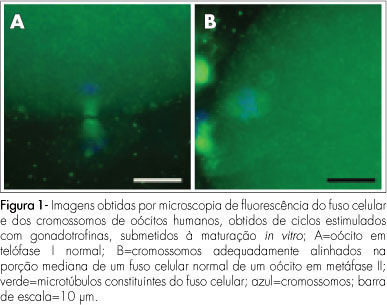Summary
Revista Brasileira de Ginecologia e Obstetrícia. 2016;38(8):412-415
Intravenous leiomyomatosis is a benign and rare condition that can result in cardiac events with fatal outcomes when left untreated. Intravenous leiomyomatosis is probably underestimated because the diagnosis is easily missed. We present a case of an intravenous leiomyomatosis without extra-pelvic involvement, with a brief review of this pathology.
46-year-old woman submitted to hysterectomy and bilateral adnexectomy because of a pelvic mass detected in ultrasound. During the surgery, intravenous leiomyomatosis diagnosis was suspected. Pathological analysis confirmed this suspicion. Further imaging exams were performed without detecting any anomalies related to this condition. The patient remained with no evidence of disease after one year of follow-up.
Intravenous leiomyomatosis is a rare condition that can lead to serious complications. Early diagnosis followed by an appropriate treatment is very important to patient outcome, and underdiagnoses can be counteracted if the gynecologist is aware of this entity.

Summary
Revista Brasileira de Ginecologia e Obstetrícia. 2010;32(8):413-413
Summary
Revista Brasileira de Ginecologia e Obstetrícia. 2002;24(6):413-417
DOI 10.1590/S0100-72032002000600009
Massive hypertrophy of the breast in pregnancy is a rare condition, with few cases reported. In spite of the unknown etiology, it seems to be an exaggerated response of the breast receptors to the pregnancy hormones. Although it can happen in any pregnancy, it presents great capacity to recur in all subsequent pregnancies. The rapid and colossal breast enlargement determines pain and the involvement of the shoulder skeleton and muscles. The excessive enlargement may promote necrosis and ulceration of the skin, leading to breast infection. The authors report one case at the second pregnancy, explaining management during the pregnancy, lactation inhibition with bromocriptine immediately after the delivery and the banding of the elevated breast. They also emphasize the importance of reduction mammoplasty a few months after delivery.

Summary
Revista Brasileira de Ginecologia e Obstetrícia. 2003;25(6):413-418
DOI 10.1590/S0100-72032003000600005
PURPOSE: to determine the existence of association between blood pressure rise and plasma ANP and BNP levels in pregnancies complicated by preeclampsia, considering the existence of a hypertensive state before pregnancy and supportive drug influence on these hormones. METHODS: in a case-control transversal study, 86 pregnant women were assessed regarding arterial pressure level and plasma ANP and BNP levels. Clinical and laboratory tests were carried out to diagnose preeclampsia and the use of hypotensive drugs and magnesium sulfate was considered. Hormone determinations were obtained through radioimmunoassay, after extraction in C18 Sep-pak columns. Correlation was investigated by means and regression analysis in the whole group of pregnant women and in specific groups, considering prior hypertension. RESULTS: plasma ANP values were 41.5±7.3, 78.4±13.1 and 89.2±13.4pg/mL (p<0.00001) and plasma BNP values were 79.5±15.8, 176.7±42.2 and 208.3±63.5 pg/mL (p=0.005), respectively, for mean blood pressure =107 mmHg, 107-139 mmHg and =140 mmHg. It was verified that the positive correlation between plasma ANP concentrations and pressure levels in preeclampsia did not depend on the existence of a hypertensive state before pregnancy (p<0.0001: preeclampsia and p<0.01: preeclampsia superimposed on chronic hypertension), whereas BNP dosages were not associated with the arterial pressure in the group with arterial hypertension prior to pregnancy (p=0.004: preeclampsia and p=0.18: preeclampsia superimposed on chronic hypertension). CONCLUSION: aggravation of hypertension in preeclampsia correlates with serum ANP and BNP concentrations, although BNP values may be influenced by the existence of a prior hypertensive state.
Summary
Revista Brasileira de Ginecologia e Obstetrícia. 2013;35(9):413-420
DOI 10.1590/S0100-72032013000900006
PURPOSE: To characterize and compare clinical, anthropometric and biochemical-metabolic variables in patients with polycystic ovary syndrome (PCOS), stratified according to body mass index (BMI). METHODS: A cross-sectional study conducted on 78 women aged 18 to 45 years with a clinical diagnosis of PCOS by the Rotterdam criteria. Patients were stratified according to BMI. The variables analyzed were: age, marital status, physical inactivity, menstrual irregularity, blood pressure (BP), anthropometric measurements, lipid profile, fasting glucose, and hormone measurements. To compare the variables between the different BMI values we used analysis of variance and the Kruskal-Wallis test. The level of significance was set at 5% for all tests. RESULTS: The patients had a mean age of 26.3 years, 79.5% of them were sedentary and 68% had hyperandrogenism. Waist circumference, waist/hip ratio, waist/height ratio and percentage of body fat were higher in the obese group. The markers of cardiovascular risk (CVR - fasting glucose, systolic and diastolic BP and LDL-cholesterol) were directly proportional to BMI, whereas HDL-cholesterol and SHBG were inversely related to BMI. CONCLUSION: The presence of markers of CVR factors increased proportionally to BMI, indicating that the metabolic profile of obese women with PCOS is more unfavorable than that of non-obese patients.
Summary
Revista Brasileira de Ginecologia e Obstetrícia. 2008;30(8):413-419
DOI 10.1590/S0100-72032008000800007
PURPOSE: to evaluate the meiotic spindle and the chromosome distribution of in vitro mature oocytes from stimulated cycles of infertile women with endometriosis, and with male and/or tubal infertility factors (Control Group), comparing the rates of in vitro maturation (IVM) between the two groups evaluated. METHODS: fourteen patients with endometriosis and eight with male and/or tubal infertility factors, submitted to ovarian stimulation for intracytoplasmatic sperm injection have been prospectively and consecutively selected, and formed a Study and Control Group, respectively. Immature oocytes (46 and 22, respectively, from the Endometriosis and Control Groups) were submitted to IVM. Oocytes presenting extrusion of the first polar corpuscle were fixed and stained for microtubules and chromatin evaluation through immunofluorescence technique. Statistical analysis has been done by the Fisher's exact test, with statistical significance at p<0.05. RESULTS: there was no significant difference in the IVM rates between the two groups evaluated (45.6 and 54.5% for the Endometriosis and Control Groups, respectively). The chromosome and meiotic spindle organization was observed in 18 and 11 oocytes from the Endometriosis and Control Groups, respectively. In the Endometriosis Group, eight oocytes (44.4%) presented themselves as normal metaphase II (MII), three (16.7%) as abnormal MII, five (27.8%) were in telophase stage I and two (11.1%) underwent parthenogenetic activation. In the Control Group, five oocytes (45.4%) presented themselves as normal MII, three (27.3%) as abnormal MII, one (9.1%) was in telophase stage I and two (18.2%) underwent parthenogenetic activation. There was no significant difference in meiotic anomaly rate between the oocytes in MII from both groups. CONCLUSIONS: the present study data did not show significant differences in the IVM or in the meiotic anomalies rate between the IVM oocytes from stimulated cycles of patients with endometriosis, as compared with controls. Nevertheless, they have suggested a delay in the outcome of oocyte meiosis I from patients with endometriosis, shown by the higher proportion of oocytes in telophase I observed in this group.

Summary
Revista Brasileira de Ginecologia e Obstetrícia. 2000;22(7):413-419
DOI 10.1590/S0100-72032000000700003
Purpose: to analyze maternal complications and perinatal results of triplet pregnancies. Method: retrospective study of maternal and perinatal data on all triplets weighing >500 g delivered in a period of 8 years at Maternidade Escola de Vila Nova Cachoeirinha. Results: between 1990-1998, 18 women gave birth to triplets, representing 1 in every 2,060 deliveries. The main complications were preterm delivery (94.4%) and preeclampsia (44.4%) and 83.3% of these patients needed hospitalization before delivery, for 1-50 days, most in order to inhibit preterm labor. Cesarean section was performed in 88.9%, the mean gestational age at birth was 34.2 weeks (+ 1.8), mean weight 1,827 g (+ 421), 20.4% weighed <1,500 g and 75.9% weighed 1,500-2,499 g. Birth weight discrepancy (> 25%) occurred in 38.9% of these pregnancies and 35.2% of the 54 fetuses were small for gestational age. Eighty-six percent of live-born infants had neonatal morbidity and 3.7% had evident congenital anomalies. Perinatal mortality was 16.7%, 7.4% due to intrauterine demise and 9.3% due to neonatal death. The mean duration of hospitalization in the neonatal ward was 18.5 days; late neonatal sepsis was the main cause of death. Conclusion: triplet pregnancies had high a incidence of obstetric complications, demanded prolonged maternal hospitalization and ended almost always in surgical delivery. Intrauterine and neonatal death rates were high, neonatal morbidity was detected in almost all live-born infants and their hospitalization was long, exposing these prematures to infection, their main cause of death. Triplet pregnancies carry high maternal and fetal risks and should be managed at tertiary facilities.
Summary
Revista Brasileira de Ginecologia e Obstetrícia. 2011;33(12):414-420
DOI 10.1590/S0100-72032011001200007
PURPOSE: to describe lower urinary tract dysfunctions and clinical demographic characteristics of patients with urinary symptoms. This study assessed the prevalence of diabetes mellitus and urodynamic changes in these women. METHODS: We conducted a cross-sectional, retrospective study on 578 women. The prevalence of diabetes mellitus and urodynamic diagnoses was assessed in patients with lower urinary tract dysfunctions, with their respective 95% confidence intervals. The prevalence ratios of urodynamic alterations were calculated according to the diabetes mellitus diagnoses. RESULTS: Seventy-seven patients (13.3%) had diabetes and type 2 diabetes was predominant (96.1%). Stress urinary incontinence was the most frequent urodynamic diagnosis (39%) in diabetic patients, followed by detrusor overactivity (23.4%). The prevalence of urodynamic alterations was associated with diabetes (PR=1.31; 95%CI=1.17-1.48). Changes in detrusor contractility (over- or underactivity) were diagnosed in 42.8% diabetic patients and in 31.5% non-diabetic patients. CONCLUSIONS: Diabetic women had a greater prevalence of urodynamic alterations than the non-diabetic ones. There was no association between diabetes mellitus and detrusor contractility alterations (p=0.80).